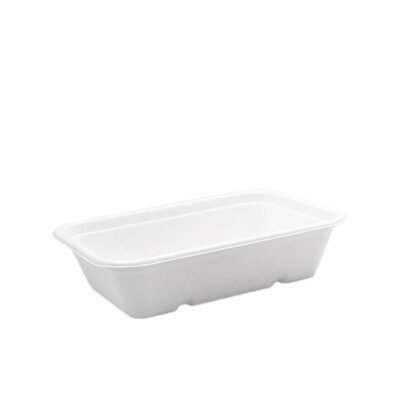MenuMenu
- Shop
-
- Brand
- Special Promotions
- About Us
- Contact Us
Wishlist
My Account

$73.75 + GST
Material: Sugarcane
Measurement: 180x125x45mm
Pack Qty: 125 × 4pkt
Carton Qty: 500
Use proper containers for serving and packing hot and cold food. Our Sugarcane Takeaway Container 500ml is made from eco-friendly sugarcane bagasse or pulp and designed as the best alternative for plastic trays. Food-safe and eco-friendly, it is biodegradable and compostable.
*Lids are sold separately.
Businesses are increasingly moving away from plastic and adopting environmentally responsible options. One such innovative solution is sugar cane food containers, a practical, durable and eco-conscious alternative to traditional food packaging. FoodPackaging2U brings a range of containers made from natural sugar cane fibre, offering a robust and versatile option for storing and transporting food.
Read More
Sugar cane containers, also known as bagasse containers, are made from the fibrous residue left after the extraction of juice from sugar cane. This material is a by-product of the sugar industry, making it a renewable and sustainable resource. Instead of ending up in landfills, the sugar cane fibre is repurposed into sturdy, eco-friendly food containers that are biodegradable and compostable. The containers can hold various items, from hot and greasy dishes to cold salads, making them ideal for food service businesses, restaurants, cafes and takeaway outlets.
Switching to eco-friendly food containers offers many benefits for businesses aligning with environmentally responsible practices. Here’s how our food containers can positively impact your business:
Read Less
Sugar cane food containers, or bagasse containers, are made from the fibrous by-product left after sugarcane stalks are crushed to extract their juice. This makes them an incredibly eco-friendly option, as they're produced from a renewable resource that would otherwise be discarded. The manufacturing process involves less energy than traditional plastic production, reducing their environmental impact. These containers are fully biodegradable and compostable, breaking down naturally in commercial composting facilities within 30-90 days, depending on conditions. They're also microwave-safe, freezer-safe and resistant to oil and water, making them versatile for various food service needs.
Sugar cane containers offer impressive durability and performance that often matches or exceeds traditional plastic containers. They're sturdy enough to hold hot, cold or wet foods without leaking or losing their shape. These containers can withstand temperatures from -20°C to 120°C, making them suitable for freezer storage and microwave reheating. Unlike paper-based alternatives, sugar cane containers don't get soggy when holding moist foods. They're grease-resistant, which prevents oil stains and maintains the container's integrity. While they may not be as flexible as some plastic containers, their rigidity provides better protection for delicate foods.
While eco-friendly food containers, including those made from sugar cane, may have a slightly higher upfront cost than traditional plastic options, it's essential to consider their overall value and long-term benefits. The price difference has been narrowing as demand increases and production processes improve. Many businesses find the marginal cost difference worthwhile when factoring in the positive environmental impact, potential for increased customer satisfaction and alignment with sustainability goals.
Disposing of sugar cane containers and other eco-friendly food packaging is crucial to realising their full environmental benefits. These containers are industrially compostable, which breaks down best in commercial composting facilities. Customers should check if their local council or waste management service accepts compostable packaging in green waste or organic bins. If this option isn't available, the next best alternative is to dispose of them in general waste, where they'll still break down faster than conventional plastics in landfill conditions. It's important to educate customers not to put these containers in recycling bins, as they contaminate plastic recycling streams.
